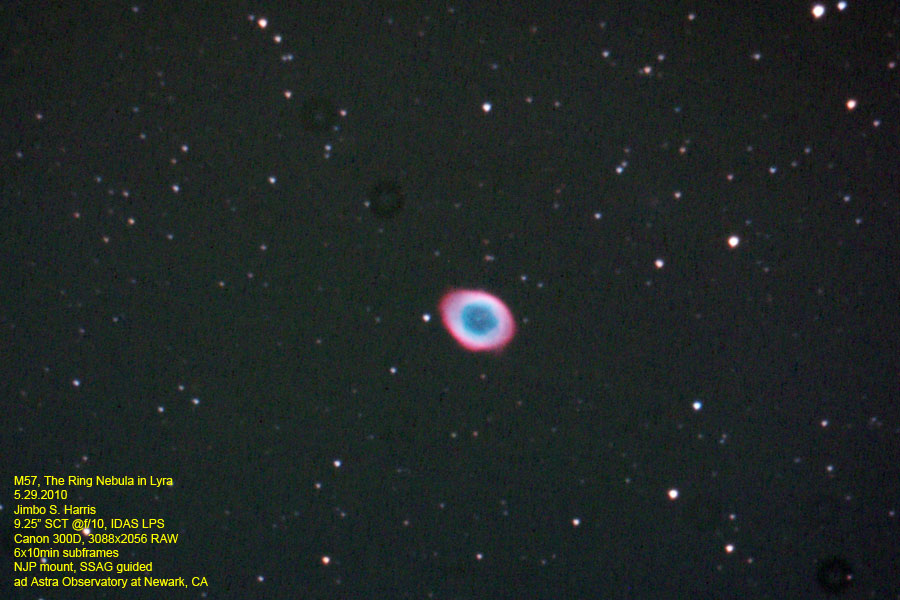The C9.25 finally brings some pixels to this tiny object. Shooting with a DSLR brings a different perspective on “useful astronomy targets” compared with most dedicated astrocams.
In the beginning, there was film, and a lot of people used film cameras on SCTs to do photography (so much so that Celestron still makes a 500mm f/5.6 “camera lens” SCT, with helical focus). Then the CCD revolution started. The first CCDs were tiny; The 2mm square TC-211 chip in my ST-4 was a standard imaging chip for awhile. It’s 192×164 pixels.
With such tiny chips, astro imagers learned to treasure short, fast refractors, because otherwise it was impossible to get any deep sky objects on such a small target. CCDs got larger incrementally, but even today, a “good beginner camera” has something on the order of 640×480 pixels (face it — the ST-7 752×540 or whatever it is, is essentially a 640×480 chip). So the lore about astrophotography still points users towards “entry level” CCDs and short, fast refractors.
This is not to say that short, fast refractors don’t have their place in the world. They are awesome. Lightweight, pinpoint stars, and a straight-through mounting. All very nice.
But when DSLRs came on the scene, they sort of turned the whole CCD revolution on its head. Because really a DSLR comes from roots in film photography, and so we the astrophotographers who use them need to relearn the lost knowledge of the film photographers.
By this, I mean that pairing a DSLR with a short, fast refractor means running out of large (2°+ FOV) targets in a big hurry. Trying to shoot some of the “classic” astrophotography targets (M51, M57, etc) becomes an exercise in careful image processing. For targets as small as M57, I’ve essentially had to pretend they don’t exist, because honestly who wants to see an object covering 20x20px out of a 3000×2000 field?
I finally got an OK image of M57 out of Kate at 2000mm, and buoyed by my recent success at focusing Cassie, I decided to try out M57 at 2350mm and see whether I can pick up any detail.
I forgot to put the dewshield back in place after focusing, so the corrector dewed up in under an hour. But here it is, an hour of M57, 6 frames of 10m each.
I finally feel like this object covers an amount of the frame that is useful to work with. It’s still a little small; this is a standard 1500×1000 crop. But I can work with it. North is up in this image.


MOST COMMENTED
Observatory
Observatory 2.0 – Time has come today!
General / Maintenance
First Light, a deeper look
Mount / Observatory / Telescope
Observatory 2.0 – Result!
Observatory
Observatory 2.0 – The Pier goes in
Gear / General / Maintenance
Martin Farmer Wormblock installation notes
Deep Sky / Long Exposure Photography
NGC2244, The Rosette Nebula
Deep Sky / Long Exposure Photography
Another beautiful night.